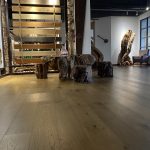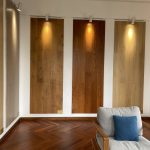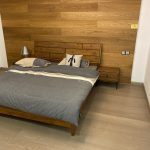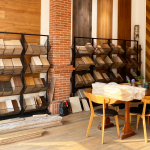Choosing the Finest Engineered Wood Flooring: A Harmonious Blend of Quality, Durability, and Aesthetics
In the pursuit of the perfect home, the selection of flooring is undoubtedly a crucial step. Engineered wood flooring has become a popular choice for modern home renovations due to its exceptional durability, aesthetic appeal, and stability. This article will guide you through the process of selecting the most suitable engineered wood flooring for your home needs.
Material and Structure: The Cornerstone of Engineered Wood Flooring
The top layer material of engineered wood flooring is key to its quality. We recommend choosing a top layer made from high-quality hardwoods such as oak, teak, or walnut, which are not only durable but also visually appealing. The multi-layered design, with wooden planks stacked crosswise, enhances the overall stability and durability of the flooring.
Thickness: The Key to Durability
The thickness of the top layer directly affects the wear resistance of the flooring. We suggest opting for a top layer thickness of at least 2 millimeters, with 3 millimeters or thicker providing superior durability. Additionally, flooring with an overall thickness between 12 millimeters and 20 millimeters is typically more stable and durable.
Surface Treatment: Dual Role of Aesthetics and Protection
Most engineered wood floors undergo pre-treatment, such as varnishing, oiling, or distressing, which not only enhances the visual appeal but also increases wear resistance and water resistance. Moreover, the choice of gloss level should match the home’s style, whether matte, semi-matte, or high gloss, to meet various aesthetic preferences.
Installation Method: The Choice Between Convenience and Professionalism
The click-lock installation method is favored for its convenience, requiring no glue or nails and suitable for DIY installation. On the other hand, glue installation is more suitable for professional installation, offering a more secure connection and better sound insulation.
Environmental Performance: The Guardian of a Healthy Home
When selecting flooring, the formaldehyde emission level is an essential factor that should not be overlooked. We recommend choosing products that meet environmental standards to ensure that formaldehyde emissions are below national standards, protecting indoor air quality. Additionally, floor products with environmental certifications such as FSC certification and well-known brand adhesive certifications are reliable choices for a healthy home.
Brand and Reputation: The Foundation of Trust
Brand reputation and user reviews are important references when selecting engineered wood flooring. Products from well-known brands are usually more quality-assured and have better after-sales service. User evaluations and suggestions can help you better understand the actual performance of the product.
Price: Balancing Value for Money
In terms of price, we advise not to blindly pursue low costs but to choose products with a high cost-performance ratio. High-quality engineered wood flooring has advantages in terms of service life, wear resistance, aesthetics, and health benefits for the family, making it more cost-effective in the long run.
Conclusion
Selecting the best engineered wood flooring is a comprehensive consideration involving material, structure, thickness, surface treatment, installation method, environmental performance, brand reputation, and price. We believe that through the introduction in this article, you can make wiser choices and add a finishing touch to your home decoration.


















